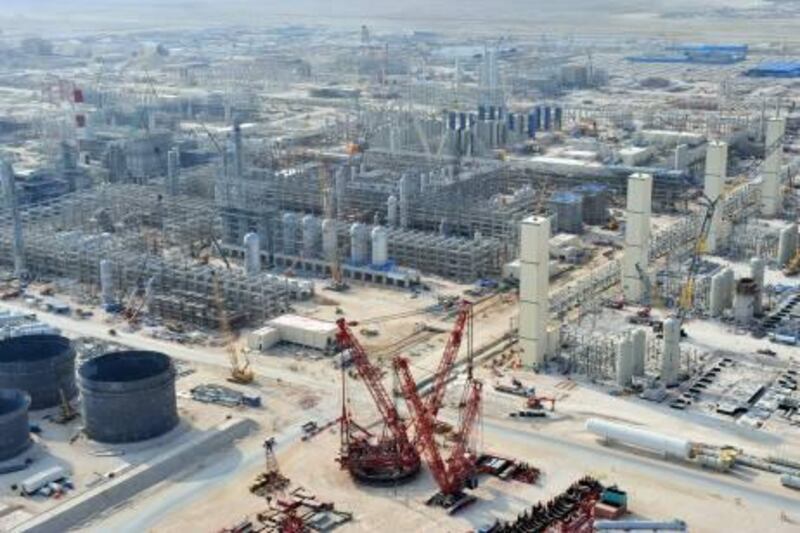Qatar Petroleum (QP) is considering pumping carbon dioxide into its biggest oil deposit to reverse declining output from the ageing field.
The project could also be among the first in the Middle East to capture waste carbon dioxide on an industrial scale and store it underground, reducing the carbon footprint of one of the world's biggest per capita emitters of the greenhouse gas that has been most closely linked with man-made global warming.
The gas could be collected from the big Pearl gas-to-liquids plant, which QP will start operating early next year in a joint venture with Royal Dutch Shell.
"One of Pearl's challenges is what to do with CO2 [carbon dioxide]," said Nasser al Kuwari, the production manager at the giant Dukhan field, a cluster of onshore oil and gas reservoirs discovered in western Qatar in 1938 that have produced oil continuously since the 1940s.
Carbon capture and storage (CCS) projects are especially difficult to justify economically in developing countries, which neither tax fuel consumption nor have alternative carbon-pricing mechanisms to discourage emissions.
The decline in Dukhan's output, however, could provide an incentive for Qatar to act. Oil production from the field has been falling since 2003, when it peaked at about 350,000 barrels of light crude oil per day (bpd). It is currently about 250,000 bpd, Mr al Kuwari said.
The high-quality crude is pumped by about 600 wells, some of which are 50 years old, according to Ramboll Oil and Gas, the Norwegian oil services company that in June won the front-end engineering and design contract for a project to revamp many of those wells.
QP has also hired ExxonMobil to help with a detailed reservoir study at Dukhan, in the hope of restoring production to 350,000 bpd within a few years.
"We need to drill new wells," Mr al Kuwari said.
The results of the study, due in 2012, will indicate where, how many and what type. They will also help QP pick an enhanced oil recovery scheme to boost output.
Injecting carbon dioxide - often an efficient but costly way to push out extra oil from ageing fields - is only one of several options under consideration. But it fits with other government priorities.
Earlier this month, Abdullah al Attiyah, the deputy prime minister and energy minister of Qatar, formally requested that the UN include CCS projects in its international programme to provide financial incentives for lowering carbon gas emissions from developing countries. Currently, such projects are excluded from the scheme, which awards carbon credits to project developers. The credits can be sold on carbon markets such as the one operating in Europe.
"We have officially submitted to the UN a proposal for a new methodology that could enable carbon dioxide capture and storage in geological formations to be part of the clean development mechanism of the Kyoto Protocol," Mr al Attiyah said at an inaugural carbon and energy forum in Doha on November 10.
The Abu Dhabi Government has also pressed for CCS to be included in the programme.
Qatar Petroleum, ExxonMobil and the government's Qatar Foundation organised the Doha forum, which was billed as part of the country's efforts to develop a framework for sustainable energy development.
Environmental groups have criticised Qatar for consistently ranking among the world's top three per capita carbon emitters in global surveys. Qatar's government attributes this to the world's growing appetite for fuels such as liquefied natural gas, of which Qatar is the leading exporter.
Qatar also exports fuel similar to diesel made from natural gas. The Pearl plant will be by far the largest facility making such fuel.
All Qatar's fuel-production plants vent significant volumes of carbon dioxide to the atmosphere.





